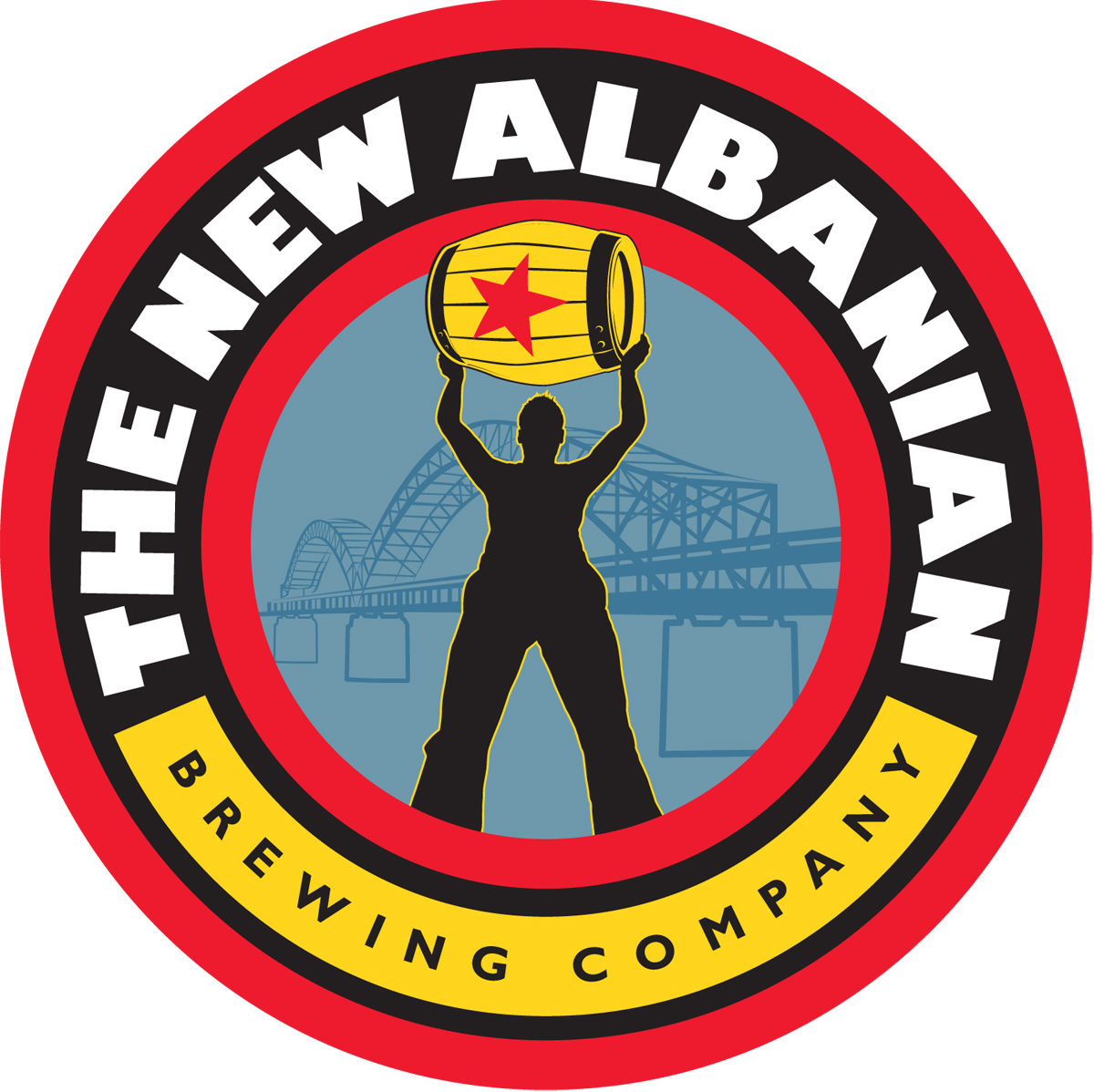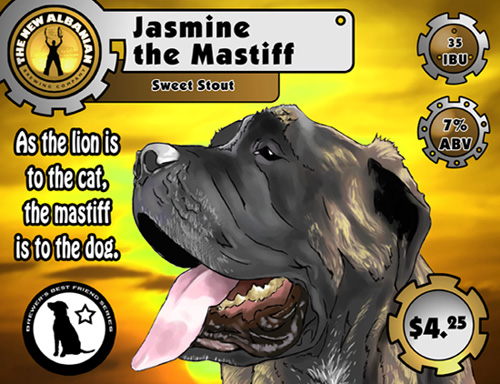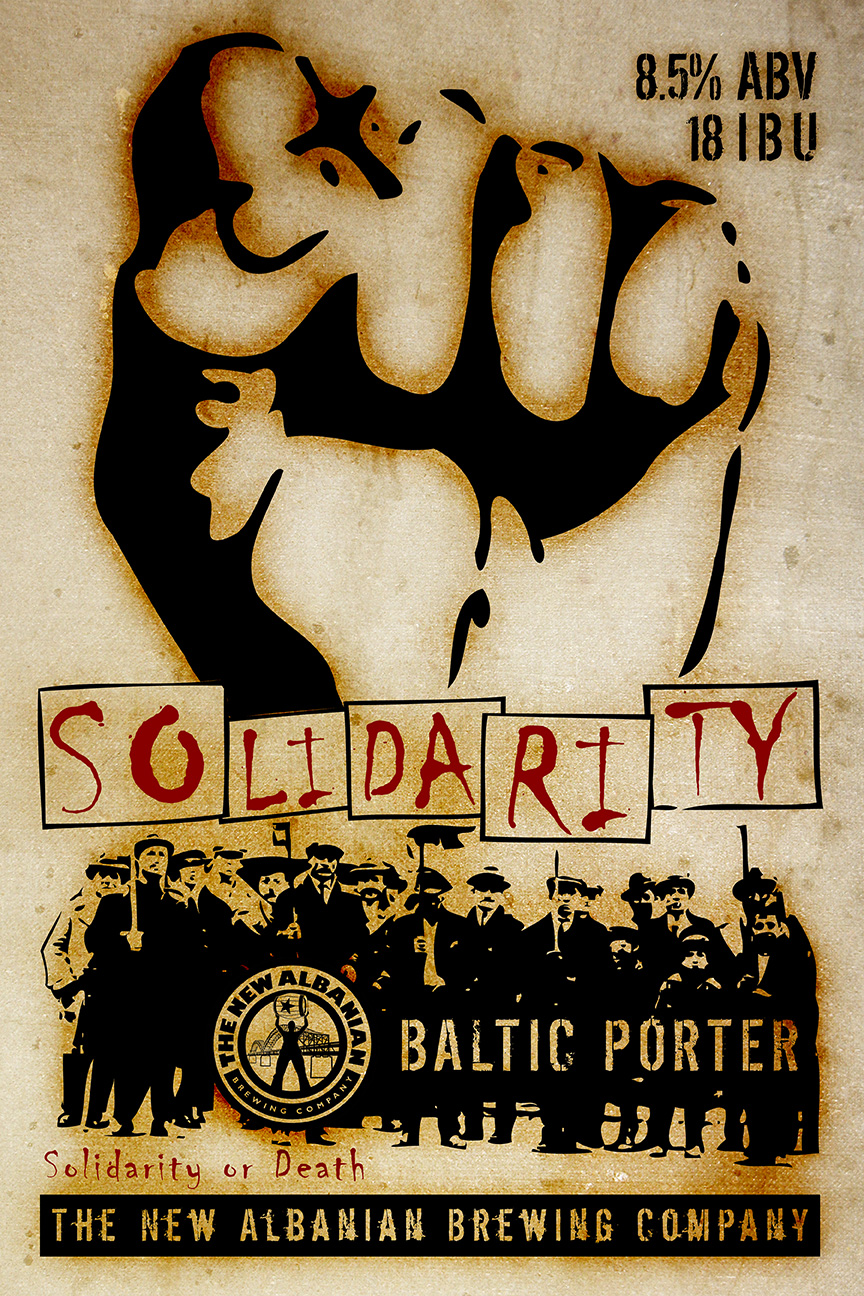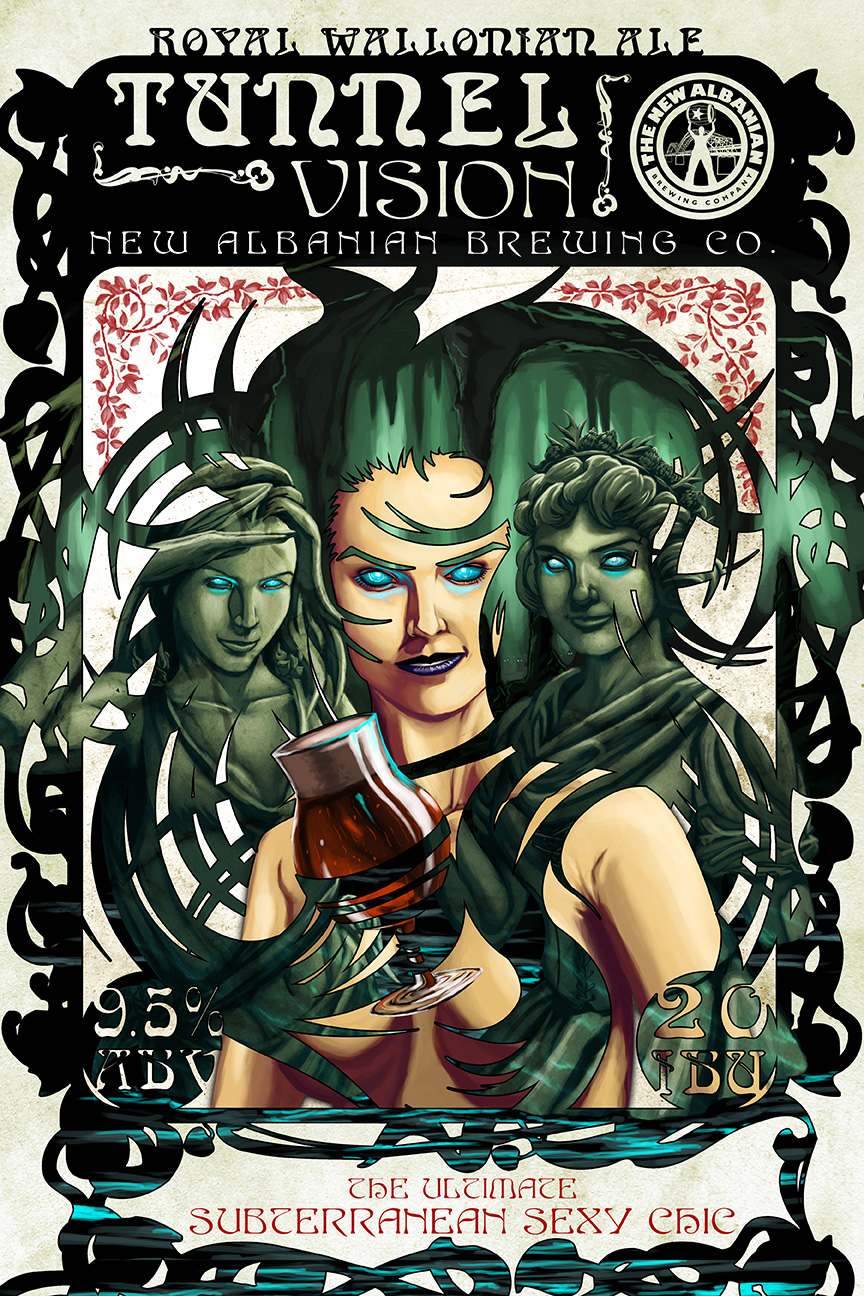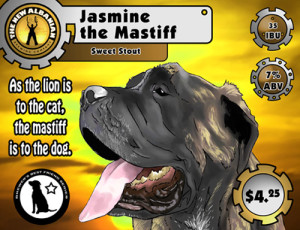
After a while, you realize it’s been a while since we brewed any of these beers, and it’s unlikely we’ll do any of them again. However, stranger things have happened.
It’s also the case that the Publican is predisposed to reassign some of these cherished names (Silent Oath, Black Hand), so you just might see them again, as used for a completely different beer. Retirees are tagged according to their primary era of brewing:
Michael Borchers era, 2002-2005
Assistants: Joey Burns, and then Chris Spellman
Tag: MicB
Jesse Williams era, 2005-2009
Assistants: Chris Spellman, and then Jared Williamson
Tag: JesW
Jared Williamson era, 2007-2011
Assistants: Kyle Tavares, and then Ben Minton
Tag: JaW
(The) Black Hand
David and Beth Howard’s robust porter recipe won the 10th annual FOSSILS homebrewed porter competition in 2002, and was brewed by NABC for release the same year. In 2003, Bob Capshew’s recipe won the competition, and permanently altered the course of NABC’s subsequent Porter production, serving henceforth as the everyday basis for Old 15-B.
Circa 6% abv
MicB
Bush Hog
Floats over the yearning palate as a ship rides the waves
Billed as “The greatest lawnmower beer on earth; cuts a swath 86 IBUs wide,” it was adorned with tap handle art culled from century-old, heavy-duty, grass-cutting clip art. After Bush Hog came Turbo Hog. There was an even bigger Boss Hogg in the planning stages, but it never came to fruition.
Circa 6.8% abv
MicB
Flat Tyre
Rocky Mountain spring water is highly overrated
When a newly minted brown ale unexpectedly turned up reddish-amber, an improvisational pun on a popular Colorado craft beer was devised. When Fat Tire began to be sold in Indiana, the joke got very old, very quickly, and we cut bait.
Circa 5.5% abv
JesW
Happy Helmut
Souvenirs, Novelties, Party Tricks
Happy Helmut was named for a merry trinket salesman with whom Roger and Beak once drank numerous half-liters of Spezial while vacationing in Bamberg. The beer was intended as an homage to Franconian traditions in brewing, with smoked malt, a touch of rye and lager yeast. Helmut later was merged into Smoked Abzug, which also hasn’t been done for a while. There may need to be a revival.
4.5% abv
JarW
Henna
Now that’s what I wanted!
For a while, NABC had a Brewers’ Best Friend Series: “Assertive, loyal specialties named for our brewers’ canine chums, and often the beers of choice for creative aging.” Other included Abbey’s Dubbel and Jaxon (both still periodically active), Malcolm’s Old Setters Ale (retired), and Jasmine (below). The series was decommissioned after artist-in-residence Tony Beard declared that there isn’t enough whisky on the planet to compel him to draw another dog. As for Henna: “Henna always likes to smell stuff. We like to smell her hoppy beer. It’s a Black IPA … or was that Cascadian Dark Ale?”
7% abv
JarW
Hopscotch
The well-intentioned plan was to brew a Wee Heavy first, then use the second runnings for a smaller ale. Then the mash got stuck, and after a laborious rescue mission, a single batch of heavily hopped Scottish ale was the final, unreproducible result.
Circa 5.5% abv
MicB
Jasmine the Mastiff
As the lion is to the cat, the mastiff is to the dog.
Silky, sweet Stout with a solid roasted character. Big, bold, and ready to lean on you (Brewers’ Best Friend Series).
7.5% abv
JaW
Merckx
Belgian-style pale ale, inspired by De Koninck of Antwerp and the unparalleled (Lance who?) exploits of Eddy Merckx – competitive cycling’s greatest all-around performer. Ever.
Circa 5% abv
MicB
Silent Oath
The joy in Belgium
Drawn from an episode in Hugo Claus’s novel, “The Sorrow of Belgium,” it was Belgian-style Brown, perhaps with a hint of intentional sourness. A portion was aged in oak chips.
MicB
St. Alfonzo
Pancake breakfasts purely optional
A paean to Frank Zappa, this Belgian strong ale with quasi-Trappist predilections incorporated simple ingredients: Belgian two-row pale malt, rock candy, brewer’s crystals (fermentable sugar), Spalt (German noble) hops and Abbey yeast.
10% abv
MicB
